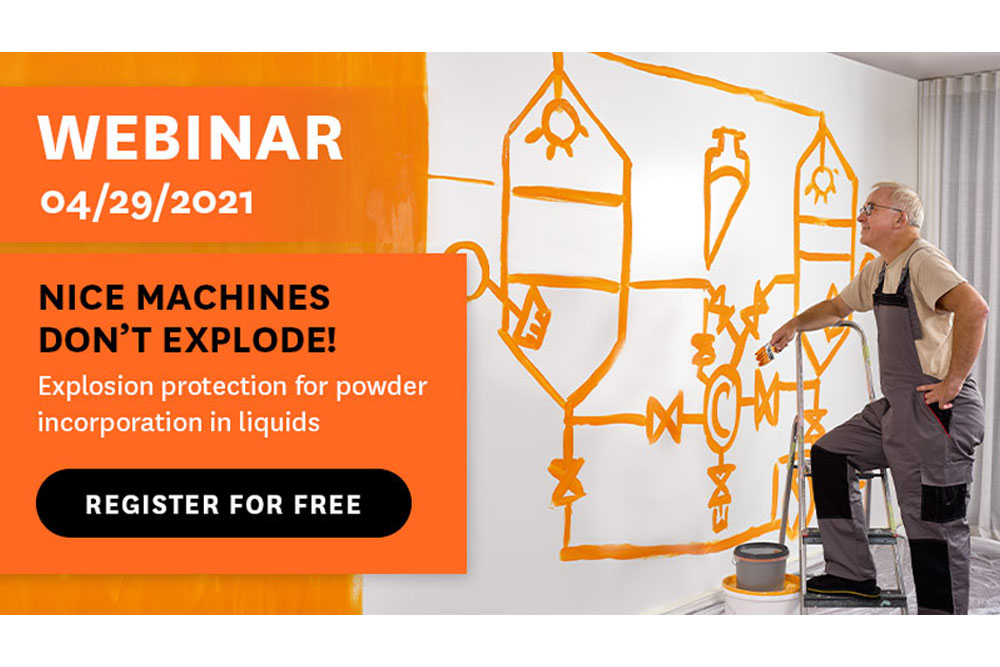After more than 400 registrations for our latest webinar, we warmly invite you to our next webinar: On the 29. April ystral process engineer Dr. Hans-Joachim Jacob will talk on the subject of "Nice machines don’t explode! Explosion protection during powder incorporation into liquids".

In order to avoid explosions when dispersing powders, measures must be taken that go far beyond simply avoiding electrical sparks. When a combustible powder is poured into a process vessel containing inflammable liquids or solvents, dangerous hybrid mixtures of inflammable gases or vapours in combination with explosive dust will be produced. There is a lot of new and up-dated knowledge available about precisely this critical case. In a hybrid mixture, the explosion characteristics stated in the safety data sheets for the individual components no longer apply because hybrid mixtures are many times more critical. Safety-relevant parameters such as minimum ignition energy, autoignition temperature and lower explosion limit are reduced to just a fraction of their original levels according to their single MSDS sheets. On the other hand, the rate of explosion pressure rise and the maximum explosion overpressure increase and this is what makes the process so dangerous.
In existing plants, agitators, dissolvers, and other equipment are located precisely in this critical zone. Are you even allowed to continue operating existing plants, in which dangerous hybrid mixtures occur? What can be done to avoid having to shut them down?
We are asked, not only by users but also by machine manufacturers and integrators, about how to design new plants and how to retrofit existing plants so that they can continue to be operated safely and without problems, and we are only too pleased to share all this information and knowledge with you. Use of the Conti-TDS means we have the perfect method for completely eliminating the occurrence of hazardous hybrid mixtures.
However, there are not only hazardous hybrid mixtures to consider, but three other risk cases: Explosive dust, inflammable gas or vapor and the combination of inert powders in the presence of inflammable gases or vapours. Especially regarding explosive dust, many users do not even know that their powders carry a risk in terms of explosive dust. We would like to systematically derive the necessary measures and conditions that have to be observed for each individual explosion case and explain them with examples. We will also introduce you to a variant of the ATEX classification that you probably don't even know of yet. At least, we are often met with astonished faces, and this is a variant that saves you a lot of money as well. We will also explain the differences between the ATEX, IECEx and NEC standards.
In 45 minutes, we will give you some insights into this exciting topic and talk about all explosion variants that are possible with combinations of powder and liquid. And we will explain to you how, in our machines, we take all the necessary measures to reliably exclude explosions and the additional conditions you have to comply with. Don't miss the webinar by ystral process engineer Dr Hans-Joachim Jacob on April 29th. Participation is free of charge; you can register here.